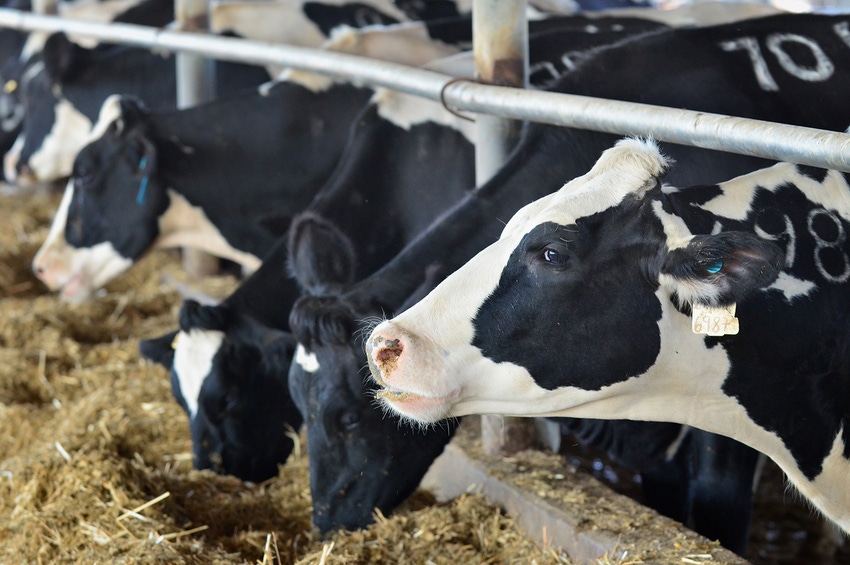Reproductive performance improved when late-calving cows were targeted with a synchronization program.
April 6, 2021

Intensive targeted synchronization improves the fertility of late-calving dairy cows in seasonal pasture-based systems, according to a paper in the Journal of Dairy Science Communications.
University of Missouri dairy specialist Stacey Hamilton, dairy veterinarian Scott Poock, and animal science professor Matt Lucy published the paper in February 2021 with researchers from the Animal and Grassland Research and Innovation Centre in Ireland, Tuskegee University in Alabama, and the University of Costa Rica.
Their data shows that early- and late-calving cows’ chances of producing a calf each year improve with targeted synchronization using an Ovsynch program with progesterone (P4, CIDR). In the studies, cows that calved after six weeks from the start of the calving season were inseminated after observed estrus or enrolled in an initial timed artificial insemination protocol and then a resynchronization protocol for a second insemination.
Cows that calve six weeks or more into the calving season are less likely to become pregnant because there are not enough postpartum days at the start of breeding or mating season with either natural or timed AI and resynchronization protocol, explained Poock.
Researchers used synchronization to shorten the interval from mating start date to pregnancy in early- and late-calving cows. They used the Ovsynch program with progesterone (P4, CIDR) in early- and late-calving cows and were able to boost pregnancy rates.
However, a Resynch program based on P4 supplementation alone and AI after detected estrus failed to improve second AI submission rates.
Compared to late-calving cows, early-calving cows see higher first-service three-week, six-week, and 12-week pregnancy rates.
The group studied three southwestern Missouri herds with 391 cows in 2016. Within each calving group, researchers randomly assigned cows to P4 Ovsynch Resynch or control (no treatment) in a two-by-two experimental design.
Artificial insemination continued for six weeks after mating start date (MSD) followed by six weeks of natural service.
The interval from MSD to AI was shorter (11.7 days vs. 14.7 days) and the three-week pregnancy rate (49.5% vs. 21.2%) and the six-week pregnancy rate (60.8% vs. 42.4%) were greater in the early calvers than the late-calving control cows.
Synchronized cows received timed AI on MSD and were not included in the statistical analysis of submission rate and interval from MSD to AI.
The proportion of cows that received a second AI was not increased by the progesterone-based resynchronization strategy but was greater in early-calving than late-calving cows.
The 12-week pregnancy rate was greater in the early-calving synchronized cows than late-calving synchronized cows (64.5% vs. 45%). The interval from MSD to pregnancy was six days and 12.6 days shorter for synchronized cows than control cows in the early- and late-calving groups, respectively.
The results show reduced reproductive performance of late-calving cows compared to early-calving cows. Reproductive performance improved when late-calving cows were targeted with a synchronization program, even when cows were only 20-50 days in milk at first AI.
However, resynchronization of estrus with a progesterone device only was not sufficient to increase the proportion of nonpregnant cows that received a second AI.
Find the complete paper here.
You May Also Like


.png?width=300&auto=webp&quality=80&disable=upscale)
